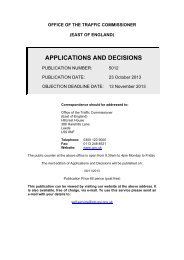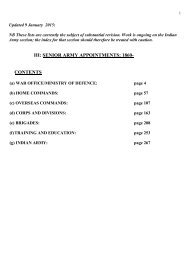2001_000
2001_000
2001_000
Create successful ePaper yourself
Turn your PDF publications into a flip-book with our unique Google optimized e-Paper software.
University of Leicester Archaeological Services<br />
One Man and Two Boats<br />
Above: the Tug ‘Birmingham’. The<br />
hull has been over-plated at the bow and<br />
stern and the cabin is not the original.<br />
In early <strong>2001</strong>, ULAS were commissioned to carry out an<br />
external survey of two historic craft, for British Waterways,<br />
using a Reflectorless EDM Theodolite. This equipment<br />
permits the swift recording of thousands of points on any<br />
surface, be it on iron, brick or wood, and can be operated<br />
by one person.<br />
The form and visible repairs of the two boats were to be<br />
recorded, while out of the water, before restoration work.<br />
The vessels will form part of British Waterways’ fleet of<br />
boats used for education programmes.<br />
The reflectorless survey provided accurate base drawings<br />
that were to be augmented with more detailed study.<br />
The two vessels represented different<br />
aspects of the history of the waterways<br />
– one is a Tug and the other is an<br />
unpowered carrying boat called a Day<br />
Boat or ‘Joey’.<br />
The Tug, ‘Birmingham’, built of iron, is<br />
45 feet (13.61m) long with a beam of<br />
just under 7 feet (2.09m) and a draught of 4 feet (1.35m)<br />
and was built in 1912. It was one of a series of similar tugs<br />
built for the Worcester and Birmingham Canal for pulling<br />
unpowered boats through tunnels. The shape of the stern<br />
was designed for a large propeller to give optimum pulling<br />
power.<br />
Joeys were 70 feet (21.63m) long, and 7 feet (2.08m) wide,<br />
with either open or small closed cabins at the stern. They<br />
were built in their thousands making them the most common<br />
boats on the canals of the West Midlands. The boat shown<br />
here was also of riveted iron construction. Patches have<br />
been welded to the outside of the hull, where corrosion behind<br />
the internal frames or knees had occurred during its long<br />
periods of use.<br />
Right: ‘Joey’, BW Asset<br />
80393. This particular<br />
boat could only be<br />
steered from one end.<br />
Others may have had a<br />
rudder at either end.<br />
15





